New Decade, New Wonders
The New 7 Wonders of The World
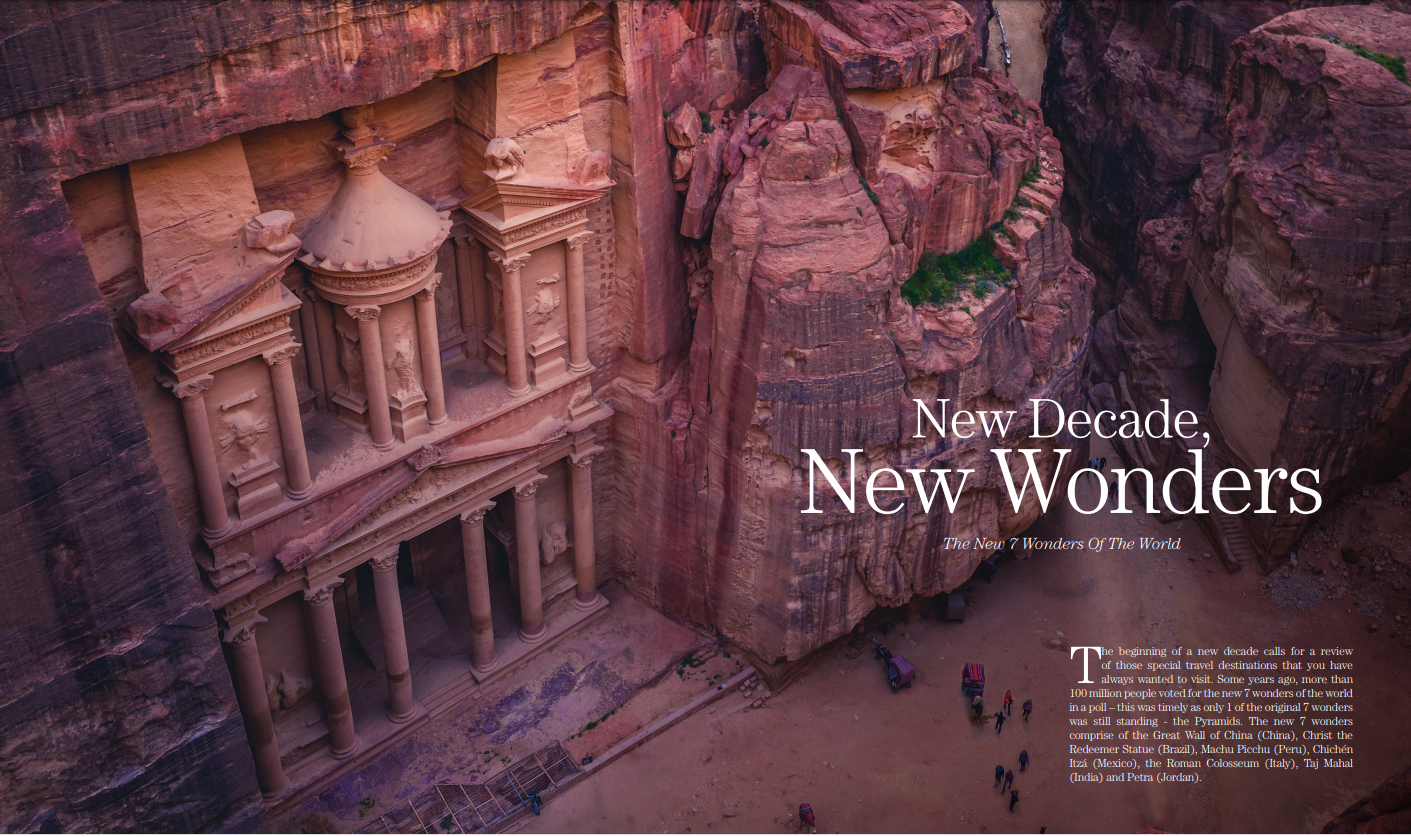
The beginning of a new decade calls for a review of those special travel destinations that you have always wanted to visit. Some years ago, more than 100 million people voted for the new 7 wonders of the world in a poll – this was timely as only 1 of the original 7 wonders was still standing – the Pyramids. The new 7 wonders comprise of the Great Wall of China (China), Christ the Redeemer Statue (Brazil), Machu Picchu (Peru), Chichén Itzá (Mexico), the Roman Colosseum (Italy), Taj Mahal (India) and Petra (Jordan).
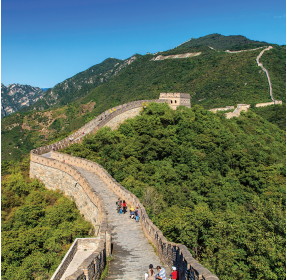
However, instead of simply heading over to the new wonders, why not make your visit even more memorable with a one of a kind experience beyond those standard tours offered by tour agencies? There can be a lot more to explore on one’s own than simply being herded around like a sheep.
THE GREAT WALL
The Great Wall of China crosses nine provinces and municipalities: Gansu, Ningxia, Shaanxi, Shanxi, Inner Mongolia, Hebei, Tianjin, Beijing and Liaoning. The wall covers a distance of over 2,000km, yet it is actually over 6,000km long as it twists and turns over mountainous terrain and often branches out from the main section.
Many of the most well-known sections of the wall are near Beijing. The best-restored being the section at Mutianyu. This section is popular among foreign travellers and is the most child-friendly section as there are cable cars travelling up/down the wall as well as a cart railway down.
At Mutianyu, one can view the wall fortifications, watchtowers and fortresses all densely spaced along its length, with crenellations on both sides. Even former First Lady Michelle Obama was taken to this section of the wall when she visited China.
Another scenic area of the wall is at Jinshanling. This is a popular hikers’ route which continues to Simatai. This area is partly restored and partly untouched, with fabulous vistas of the wall snaking up and down. Jinshanling is some 154km away from Beijing and a 2–3hour drive.
Other than getting to see different characteristics of each section of the Great Wall, visitors can also enjoy a night tour on the wall. One can take in a leisurely 4 day camping tour to truly appreciate all its scenic treasures.
Another section of note is the Huanghuacheng section of the Great Wall. This area is noted for its perfect blend of lake scenery and ancient wall, parts of which are immersed in water. Located about 75km away from Beijing, a 1½ hour drive, there is even a 500-year-old Ming Dynasty chestnut orchard at the foot of the wall. One can board cruise boats or do a 2-day camping tour at this location.
For runners, head over to the Huangyaguan section in Tianjin and join the annual Great Wall marathon race in May.
An unusual sight can be viewed at the Shanhai Pass near Qinhuangdao, Hebei Province, a 3½ hour drive from Beijing. This east end of the main Ming Dynasty Great Wall and former frontier defence point against the Manchus is where the Great Wall meets the sea.
For a more enriching experience, consider staying near the wall. There are several interesting accommodations which are available for different budgets. First, there is the Commune – A group of secluded villas near Badaling, designed by 12 talented Asian architects, where you can enjoy the surrounding luxuriant mountains plus exclusive access to an untouched section of the Great Wall.
More budget-friendly accommodations include Grandma’s House, a two-bedroom tourist house near Mutianyu, and The School House – A sustainable tourism enterprise that provides employment for village residents. The School House includes eight village houses restored into comfortable visitor accommodation. The area offers numerous walks where one can visit orchards and producers of artisanal, natural and sustainable products. Nearby is The Brickyard, a 25-room lodge and spa with spectacular views of the wall, and also the Farmhouse which is run by a Briton who organises excursions to unofficial and remote sections of this marvellous new wonder of the world.
One thing to note about the Great Wall is that if you are short on time, you might want to avoid the Badaling and Jugongguan sections. While these sections are closest to Beijing, they are also the most crowded with many local Chinese tourist groups visiting these areas!
THE TAJ MAHAL
This spectacular example of Mughal architecture, commissioned in 1632 by Emperor Shah Jahan to house the remains of his beloved wife, has been a designated UNESCO World Heritage site since 1983. It remains one of the world’s most celebrated structures and a stunning symbol of India’s rich history.
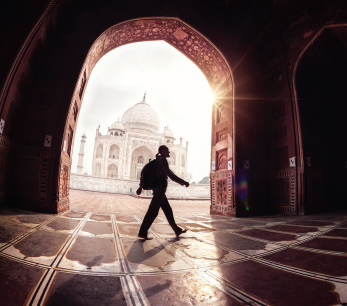
The Taj Mahal was completed over a period of 22 years and required more than 20,000 workers from India, Persia, Europe and theOttoman Empire to complete, along with the use of some 1,000 elephants which were specially imported to help to build the mausoleum complex, constructed of white marble inlaid with semi-precious stones (including jade, crystal, lapis lazuli, amethyst and turquoise). The monument needs to be seen during both sunrise and sunset. A cruise down the Yamuna River is one of the most breath-taking ways to take in the postcard view. If you want to admire this architectural wonder at your own time, stay at one of its hotels which have great rooftop views. For a romantic experience, visit the Taj Mahal at night from 2030 to 0030 hours. This is only available 2 days before and 1 day after a full moon and tickets should be purchased in advance from the Archaeological Survey of India office.

There is also an informative museum and a couple of other buildings that is worth exploring, such as the mosque and the assembly hall.
The Mehtab Bagh (Moonlight Garden) located across the river from the Taj Mahal, provide an incredible view of the Taj, particularly at sunset. The tomb of Mumtaz Mahal’s grandfather, Mirza Ghiyas Beg, also known as I’timad-udDaulah is nearby. Often referred to as the “baby Taj Mahal”, it is thought to have been regarded as a draft for the fullsize Taj and worth a visit for Mughal architectural buffs.
PETRA
This Jordanian attraction, perhaps best known for its use as a location in the movie Indiana Jones and The Last Crusade, was the pink sandstone capital city of the Nabataeans from roughly 300 BC to 100 AD. Hidden by time and shifting sands, Petra tells of a lost civilization. Little is known about the Nabateans – a nomadic desert people whose kingdom rose up from these cliffs and peaks, and whose incredible wealth grew from the lucrative incense trade.
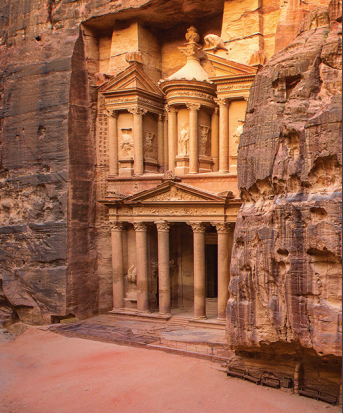
Raqmu, or Petra (named by the Greeks), grew into the Nabateans’ most prominent city, linking camel caravans between the Mediterranean and Arabian Seas, from Egypt to Syria and beyond to Greece. Control of water sources and the seemingly magical ability to vanish into the cleft rocks safeguarded the Nabateans from conquests for centuries. However, it was only in 63BC when the Romans arrived to begin a new era of massive expansion that a 6000-seater theatre and some of the city’s most impressive facades, which were carved from the top down, were added. The equally impressive water system that supported some 30,000 inhabitants comprised of irrigation channels and underground cisterns which stored supplies for drier times of the year.
Entry to the location is spectacular, stretching out in a line from the town of Wadi Musa. Visitors enter the park and then follow the trail into the Siq, where tourists get the first view of the Treasury. Beyond the Treasury, one finds the Royal Tombs and Roman ruins, the splendid Monastery and numerous other structures.
For three nights every week (Monday, Wednesday and Thursday at 2030 hours), the Siq and the area around the Treasury are lit by 1500 candles. This is the most magical way to experience Petra and should be considered when planning your itinerary. Select tour operators can also arrange for you to have a unique VIP experience. For an unforgettable evening, you can also request for a private candlelit dinner in the Nabataean caves of Petra or under the desert stars in Wadi Rum.
Spring and fall offer the most temperate weather, with fantastic light while summer can be unbearably hot. January and February are the coolest months, but the nights can be cold. As the site is expansive, allow yourself 2 days to truly experience this spectacular wonder of the world.
COLOSSEUM
Those who have visited Rome would have undoubtedly visited this new wonder of the world as it is practically on every tourist’s must-see list. However, you might want to take in an evening visit for an unforgettable experience as there are a lot less visitors at night, allowing you to better
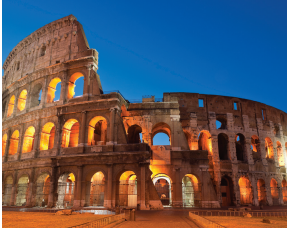
appreciate the architecture of the corridors. You will not only get to visit the main and second levels of the Colosseum which you can do during the day, but also get to go out onto the Colosseum arena floor which is not accessible with regular daytime entry
CHICHÉN ITZÁ
Chichén Itzá is one of many attractions in Mexico. This new wonder of the world, a 1000-year-old ancient Mayan city ruin, occupies some 10km2 in the south-central Yucatán state. The site is so named because of two big cenotes on the site – chi (“mouths”), chen (“wells”), and Itzá, the name of the Mayan tribe that settled there.
This UNESCO World Heritage site was founded at around 6th century CE, presumably by the Mayans of the Yucatán Peninsula, who had occupied the region since the PreClassic or Formative Period (1500 BCE – 300 CE). The Itzá, for whom the site is named, is believed to have arrived some 200 to 300 years later. This tribe was responsible for the construction of the major buildings, such as the massive 24m tall El Castillo (The Castle) pyramid, the 166m long ball court (for playing the game tlachtli [Mayan: pok-tapok]), the jaguar throne, High Priest’s Grave, the Colonnade (Thousand Columns) and the adjoining Temple of the
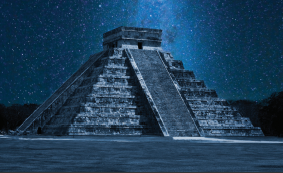
Warriors. By the time the Spanish arrived in 16th century CE, this important city had been largely abandoned and the Mayans’ mysterious decline continue to fascinate scholars of Mayan culture.
Plan a visit to Chichén Itzá in March or September during the annual equinoxes and a special treat awaits visitors to El Castillo. At sunset, a play of light and shadow creates the eerie effect of a snake gradually slithering down the staircase.
Besides Chichén Itzá, there are plenty of other Mexican attractions to explore, and one can easily plan for a two-week visit and still be captivated by the different sights. For those who enjoy history and architecture, there are no less than 26 UNESCO-designated world heritage sites and charming colonial towns. The adventurous and sportsinclined will love the stunning Pacific beaches, stark deserts, mangrove swamps and natural pools for both chill and thrill vacations.
CHRIST THE REDEEMER
In 1921, the Roman Catholic archdiocese of Rio de Janeiro, Brazil proposed that a statue of Christ be built on Mount Corcovado, a 704m summit, because its commanding height would make the statue visible from anywhere in Rio. Citizens petitioned President Epitácio Pessoa to allow the construction of the statue on Mount Corcovado and the foundation stone of the base was ceremonially
laid on April 4, 1922 to commemorate the centennial of Brazil’s independence from Portugal. The team of Brazilian engineer Heitor da Silva Costa and artist Carlos Oswald was credited with the idea for the figure’s standing pose with arms spread wide, while French sculptor Paul Landowski was the primary designer of the figure’s head and hands. The completed Christ the Redeemer stands atop Mount Corcovado, Rio de Janeiro in south-eastern Brazil. It was completed in 1931 and stands at 30m tall, while its horizontally outstretched arms spans 28 m.
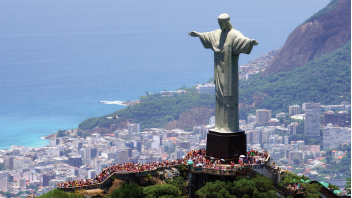
Beyond a visit to the statue, guests staying at the Belmond Copacabana Palace can enjoy a sunrise picnic at the foot of the statue while taking in panoramic views of the city from this iconic landmark before other visitors are admitted.
The beautiful and exotic city of Rio de Janeiro has, of course, much more to offer beyond a new wonder. There are the famous beaches and botanic gardens as well as the world’s largest Carnival (Rio Carnival) where an excess of 2 million people reportedly attends each day of festivities throughout the 5-day festival held usually in February.
MACHU PICCHU
Of the many wonders of the world, the imposing Incan citadel of Machu Picchu in Peru must surely be the most mysterious and spiritual. Regularly featured in “Most Visited Tourist Attractions in the World” round-ups and with more than a million visitors a year, careful planning for your trip to this site will present you with one of the most memorable visits of a lifetime.
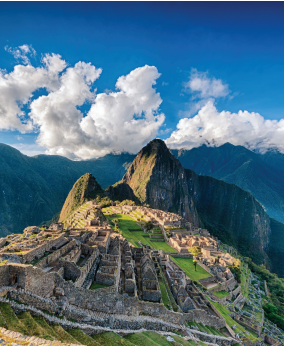
After landing in Lima, Peru, you may want to connect immediately to Cusco, but be sure to acclimatise to the high altitudes of between 2400m to 3300m before embarking on any strenuous activity. Access to Machu Picchu (which means old mountain in Quechu) is either via the arduous 5-day hike along an Inca Trail or by train from the town of Cusco to Aguas Calientes at the foothills and then from there by bus (a 90-minute ride uphill) to the top where the citadel of Machu Picchu is located.
Charming lodgings in Aguas Calientes, surrounded by nature, make up part of the experience. The Inkaterra Machu Picchu Pueblo Hotel is a good resort choice as it is tucked away from the crowds, and you will wake up each morning to views of lush forest greenery, colourful birds and blooming orchids. Take time to also enjoy the rustic hill town, Peruvian food and the beauty and majesty of the mountainous surroundings.
Be sure to allow at least 2 nights in Aguas Calientes, so that you can catch an early bus to the Citadel site before the bus tours arrive or stay later after the tours depart without having to rush off to catch a plane. Remember to load some pan flute music onto the playlist in your phone and the experience will be magical, especially when the morning mist rolls by to fully reveal the site. Head over to the Guard House at an area slightly above the main part of the site. It is usually less crowded up there as people rush to the heart of the site. Pause here to enjoy the lovely overview of the citadel, gain your bearings and soak in the spirit of the site. Wonder at the exquisite engineering and amazing construction skills of the ancient builders who stacked precision cut stones, one atop another with no mortar – and yet they fit so perfectly that one cannot even slip a credit card between the stones. Furthermore, the structures are earthquake-proof.
Depending on your fitness level, you may want to hike over to different peaks and gates from which you can glimpse different views of the citadel. Spend time in the Andean capital of Cusco with its cobblestoned streets with colourfully garbed locals and their llamas, great hotels, museums, archaeological sites and pre-Columbian buildings. Accommodation in a 16th-century former Jesuit monastery completes the Peruvian experience. The Belmond Hotel Monasterio is a relic of Spanish colonial architecture with two landscaped courtyards and covered arcades as well as a Baroque chapel housing religious artwork, including an impressive collection of Cuzquenian School paintings dating from the 17th century. After a long day hiking Cuzco’s cobblestone hills, unwind in the barrelvaulted Lobby Bar before sampling delicious Peruvian fare. A must try is the huge variety of chewy corn and other refreshing locally grown vegetables and grains, and a soup dish that will surely send you to bed satisfied.
THE RUNNERS-UP LIST
Once you have ticked off the above new 7 wonders on your list, do make a mental note that there are runnersup to the final list and they are also must-sees. These include the Acropolis (Greece), Hagia Sophia (Turkey), Kremlin (Russia), Neuschwanstein (Germany), Eiffel Tower (France), Stonehenge (United Kingdom), Alhambra (Spain), Kiyomizu Temple (Japan), Sydney Opera House (Australia), Angkor (Cambodia), Timbuktu (Mali), Easter Island (Chile) and the Statue of Liberty (USA). So, if you have yet to visit these destinations, it is time to add them to your itinerary when your next vacation or business trip takes you to these countries. More wondrous adventures await you!
About the Writer
Jean Tsai
Jean Tsai is a communications and training professional with more than 30 years of experience in the banking, technology, healthcare, luxury goods as well as the arts and culture industries. She holds a Master of Public Health from UCLA, USA. Whilst employed full time in the corporate world, she also found time to be a docent with NLB, Nparks, seven National Heritage Board institutions, heritage annual events and the Istana. In recent years, she divides her time between being a freelance writer, curator and researcher while continuing her more than 20 year service as a museum docent.










